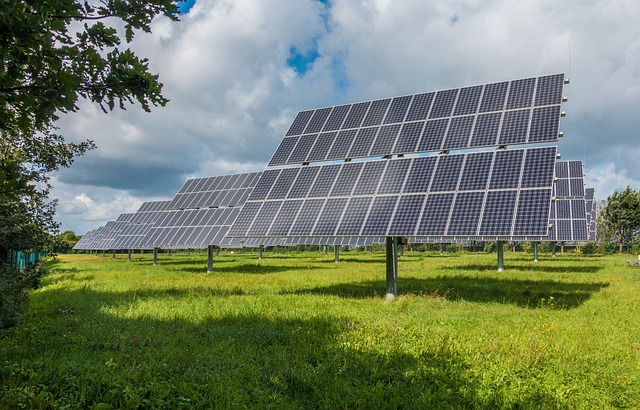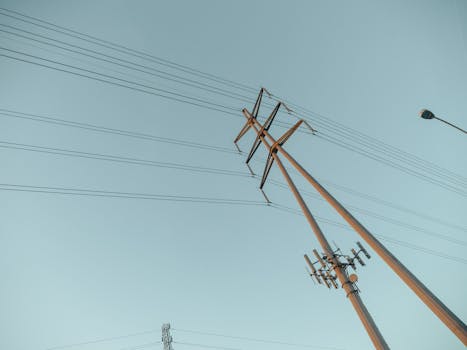“Empower Your Safety: Wire Your Solar Generator for Reliable Emergency Power!”
Wiring a solar generator for emergency power is a practical solution for ensuring a reliable energy source during outages or natural disasters. This process involves connecting solar panels, a charge controller, a battery bank, and an inverter to create a self-sustaining power system. Understanding the components and their functions is crucial for effective setup and operation. By following the correct wiring procedures, you can harness solar energy to power essential devices, providing peace of mind and security in times of need.
Understanding Solar Generator Components
Understanding the components of a solar generator is crucial for anyone looking to harness solar energy for emergency power. A solar generator typically consists of several key elements, each playing a vital role in the overall functionality of the system. By familiarizing yourself with these components, you can better appreciate how they work together to provide reliable energy during power outages or other emergencies.
At the heart of a solar generator is the solar panel, which captures sunlight and converts it into electricity. Solar panels are made up of photovoltaic cells that generate direct current (DC) electricity when exposed to sunlight. The efficiency of these panels can vary based on factors such as the type of material used, the angle of installation, and the amount of sunlight available. Therefore, selecting high-quality solar panels is essential for maximizing energy production.
Once the solar panels generate electricity, the next component in the system is the charge controller. This device regulates the voltage and current coming from the solar panels to ensure that the batteries are charged safely and efficiently. Without a charge controller, the batteries could be overcharged, leading to reduced lifespan or even damage. Additionally, the charge controller prevents the batteries from discharging back into the solar panels at night, which is crucial for maintaining battery health.
The batteries themselves are another critical component of a solar generator. They store the electricity generated by the solar panels for later use, providing a reliable power source when needed. There are various types of batteries available, including lead-acid, lithium-ion, and gel batteries, each with its own advantages and disadvantages. For instance, lithium-ion batteries tend to have a longer lifespan and higher energy density compared to lead-acid batteries, making them a popular choice for modern solar generators. When selecting batteries, it is important to consider factors such as capacity, discharge rate, and compatibility with the rest of the system.
In addition to these primary components, an inverter is necessary to convert the DC electricity stored in the batteries into alternating current (AC) electricity, which is what most household appliances require. The inverter plays a crucial role in making the stored energy usable for everyday devices, from lights to refrigerators. When choosing an inverter, it is essential to consider its power rating, as it must be able to handle the total wattage of the appliances you plan to run.
Furthermore, wiring and connectors are essential for linking all these components together. Proper wiring ensures that electricity flows efficiently between the solar panels, charge controller, batteries, and inverter. It is important to use appropriately sized wires to prevent overheating and energy loss. Additionally, connectors must be secure to avoid any interruptions in the power supply.
Finally, a monitoring system can enhance the functionality of a solar generator by providing real-time data on energy production and consumption. This information can help users make informed decisions about energy usage, ensuring that they maximize the efficiency of their solar generator during emergencies.
In conclusion, understanding the components of a solar generator is fundamental for anyone interested in utilizing solar energy for emergency power. By recognizing the roles of solar panels, charge controllers, batteries, inverters, wiring, and monitoring systems, you can effectively set up and maintain a solar generator that meets your energy needs during critical times. With this knowledge, you are better equipped to make informed decisions and ensure that you have a reliable power source when it matters most.
Step-by-Step Wiring Instructions

Wiring a solar generator for emergency power is a practical skill that can provide peace of mind during unexpected outages. To begin, gather all necessary components, including the solar panels, charge controller, battery bank, inverter, and the necessary wiring. Each component plays a crucial role in ensuring that your solar generator operates efficiently and safely.
First, start with the solar panels. These panels convert sunlight into electricity, which is essential for charging your battery bank. Position the solar panels in a location that receives maximum sunlight exposure, ideally facing south if you are in the Northern Hemisphere. Once the panels are in place, connect them in series or parallel, depending on your voltage requirements. For instance, connecting panels in series increases voltage, while parallel connections increase current. Use appropriate gauge wiring to handle the expected current load, ensuring that the connections are secure and weatherproofed if necessary.
Next, connect the solar panels to the charge controller. The charge controller is a critical component that regulates the voltage and current coming from the solar panels to the batteries, preventing overcharging and extending battery life. Most charge controllers have clearly marked terminals for connecting the solar panels and batteries. Begin by connecting the positive and negative leads from the solar panels to the corresponding terminals on the charge controller. It is essential to follow the manufacturer’s instructions for your specific model to avoid any potential damage.
After establishing the connection between the solar panels and the charge controller, the next step is to connect the battery bank. The battery bank stores the energy generated by the solar panels, making it available for use during emergencies. When wiring the batteries, ensure they are connected in the correct configuration to achieve the desired voltage. For example, if you are using multiple 12-volt batteries to create a 24-volt system, connect two batteries in series. Again, connect the positive terminal of one battery to the negative terminal of the next, and repeat this process for additional batteries. Once the batteries are configured, connect them to the charge controller, ensuring that the positive and negative leads are correctly aligned.
With the batteries connected, the next step involves wiring the inverter. The inverter converts the direct current (DC) stored in the batteries into alternating current (AC), which is what most household appliances require. Connect the inverter to the battery bank by attaching the positive and negative leads from the inverter to the corresponding terminals on the battery bank. It is crucial to use appropriately rated cables to handle the inverter’s output capacity, as this will ensure safe operation and prevent overheating.
Finally, once all components are connected, double-check each connection for security and correctness. It is advisable to use a multimeter to verify that the system is functioning as intended. Check the voltage output from the solar panels, the charge controller, and the battery bank to ensure everything is operating within the expected parameters. Once confirmed, you can connect your appliances to the inverter, providing you with reliable emergency power when needed.
In conclusion, wiring a solar generator for emergency power involves a systematic approach that ensures each component is correctly connected and functioning. By following these step-by-step instructions, you can create a reliable solar generator that will serve you well during power outages, providing both convenience and security in times of need.
Safety Precautions When Wiring
When wiring a solar generator for emergency power, safety precautions are paramount to ensure both the effectiveness of the system and the safety of the user. First and foremost, it is essential to work in a well-ventilated area, especially if you are using batteries that may emit gases during charging. This precaution helps to prevent the accumulation of potentially harmful fumes, which can pose a risk of explosion or fire. Additionally, wearing appropriate personal protective equipment, such as gloves and safety goggles, is crucial. These items protect against accidental contact with electrical components and potential short circuits.
Before beginning the wiring process, it is vital to disconnect all power sources. This includes unplugging any devices connected to the solar generator and ensuring that the solar panels are not exposed to sunlight. By doing so, you minimize the risk of electric shock, which can occur if the system is inadvertently activated during installation. Furthermore, it is advisable to familiarize yourself with the specific components of your solar generator, including the inverter, charge controller, and battery bank. Understanding how these parts interact will not only enhance your safety but also improve the overall efficiency of your setup.
As you prepare to wire the solar generator, it is important to use the correct gauge of wire for your system. Using wires that are too thin can lead to overheating and potential fire hazards, while excessively thick wires may be cumbersome and difficult to manage. Consult the manufacturer’s specifications or a reliable electrical guide to determine the appropriate wire gauge for your specific application. Additionally, ensure that all connections are secure and properly insulated. Loose connections can create resistance, leading to overheating and possible failure of the system.
When connecting the solar panels to the charge controller, it is essential to follow the correct polarity. Connecting the positive terminal of the solar panel to the positive terminal of the charge controller, and the negative to the negative, is crucial to prevent damage to the components. Miswiring can not only damage the solar generator but also pose a significant safety risk. To further enhance safety, consider using fuses or circuit breakers in your wiring setup. These devices act as protective measures, interrupting the flow of electricity in the event of a short circuit or overload, thereby preventing potential fires.
Moreover, it is wise to keep your workspace organized and free of clutter. A tidy environment reduces the risk of accidents and allows for better focus during the wiring process. As you work, take your time and double-check each connection before proceeding to the next step. Rushing through the installation can lead to mistakes that compromise safety and functionality. Once the wiring is complete, conduct a thorough inspection of the entire system before powering it on. Look for any signs of wear or damage, and ensure that all connections are tight and secure.
Finally, after successfully wiring the solar generator, it is advisable to test the system in a controlled environment before relying on it for emergency power. This testing phase allows you to identify any potential issues and address them proactively. By adhering to these safety precautions, you can confidently wire your solar generator, ensuring that it operates efficiently and safely when you need it most. In conclusion, taking the time to prioritize safety during the wiring process not only protects you but also enhances the reliability of your solar power system in emergency situations.
Common Mistakes to Avoid
When wiring a solar generator for emergency power, it is crucial to be aware of common mistakes that can compromise both the efficiency of the system and the safety of its users. One of the most frequent errors is underestimating the power requirements of the devices you intend to run. Many individuals assume that their solar generator can handle any load without considering the wattage of their appliances. To avoid this pitfall, it is essential to calculate the total wattage needed for all devices and ensure that the generator’s output capacity is sufficient. This not only prevents overloading the system but also extends the lifespan of the generator.
Another common mistake is neglecting to use the appropriate gauge of wiring. Using wires that are too thin can lead to overheating and potential fire hazards, while excessively thick wires can be cumbersome and unnecessary. It is vital to match the wire gauge to the current that will flow through it, adhering to the National Electrical Code (NEC) guidelines. This attention to detail ensures that the wiring can handle the load without significant voltage drop, which can affect the performance of your solar generator.
In addition to wiring issues, many users overlook the importance of proper grounding. Failing to ground the solar generator can lead to electrical shocks or damage to the equipment. Grounding provides a safe path for excess electricity to dissipate, protecting both the generator and the connected devices. Therefore, it is imperative to follow grounding protocols and ensure that all components are securely connected to a grounding system.
Moreover, improper placement of solar panels is another mistake that can hinder the efficiency of your solar generator. Positioning panels in shaded areas or at incorrect angles can significantly reduce their ability to capture sunlight. To maximize energy production, it is advisable to install solar panels in a location that receives direct sunlight for most of the day. Additionally, regularly cleaning the panels and checking for obstructions can help maintain optimal performance.
Another aspect that is often overlooked is the importance of battery maintenance. Many users fail to monitor battery levels or neglect to perform regular maintenance checks. This can lead to battery degradation, reducing the overall efficiency of the solar generator. It is essential to keep an eye on the state of charge and to follow the manufacturer’s recommendations for battery care, including proper charging cycles and storage conditions.
Furthermore, many individuals do not take the time to familiarize themselves with the inverter specifications. The inverter is a critical component that converts the direct current (DC) from the solar panels and batteries into alternating current (AC) for household use. Using an inverter that is not compatible with your generator or appliances can lead to inefficiencies or even damage. Therefore, understanding the specifications and ensuring compatibility is vital for a successful setup.
Lastly, it is important to avoid rushing the installation process. Taking shortcuts can lead to mistakes that may compromise safety and functionality. Instead, take the time to plan the installation carefully, double-check connections, and ensure that all components are correctly configured. By avoiding these common mistakes, you can create a reliable solar generator system that provides emergency power when you need it most, ensuring peace of mind during unexpected outages.
Q&A
1. **Question:** What components are needed to wire a solar generator for emergency power?
**Answer:** You will need a solar panel, a charge controller, a battery (or battery bank), an inverter, and appropriate wiring and connectors.
2. **Question:** How do you connect the solar panel to the charge controller?
**Answer:** Connect the positive (+) terminal of the solar panel to the positive (+) input of the charge controller and the negative (-) terminal of the solar panel to the negative (-) input of the charge controller.
3. **Question:** How do you connect the charge controller to the battery?
**Answer:** Connect the positive (+) terminal of the charge controller to the positive (+) terminal of the battery and the negative (-) terminal of the charge controller to the negative (-) terminal of the battery.
4. **Question:** How do you connect the inverter to the battery?
**Answer:** Connect the positive (+) terminal of the inverter to the positive (+) terminal of the battery and the negative (-) terminal of the inverter to the negative (-) terminal of the battery.
Conclusion
To wire a solar generator for emergency power, first ensure you have the necessary components: a solar panel, charge controller, battery, inverter, and the generator itself. Connect the solar panel to the charge controller, then link the charge controller to the battery to store energy. Next, connect the inverter to the battery to convert the stored DC power into AC power for household use. Finally, plug your devices into the inverter’s outlets. Ensure all connections are secure and follow safety guidelines to prevent damage or hazards. Regularly maintain the system for optimal performance during emergencies.




